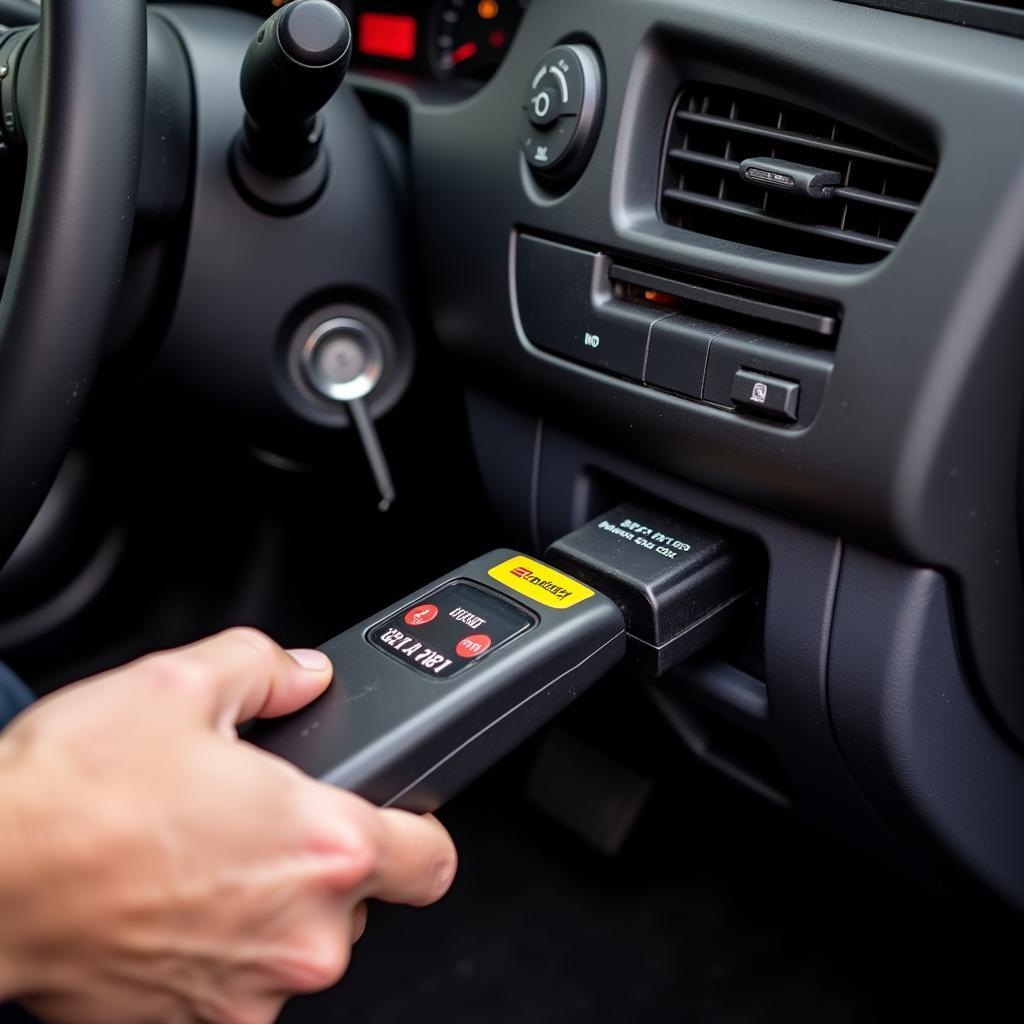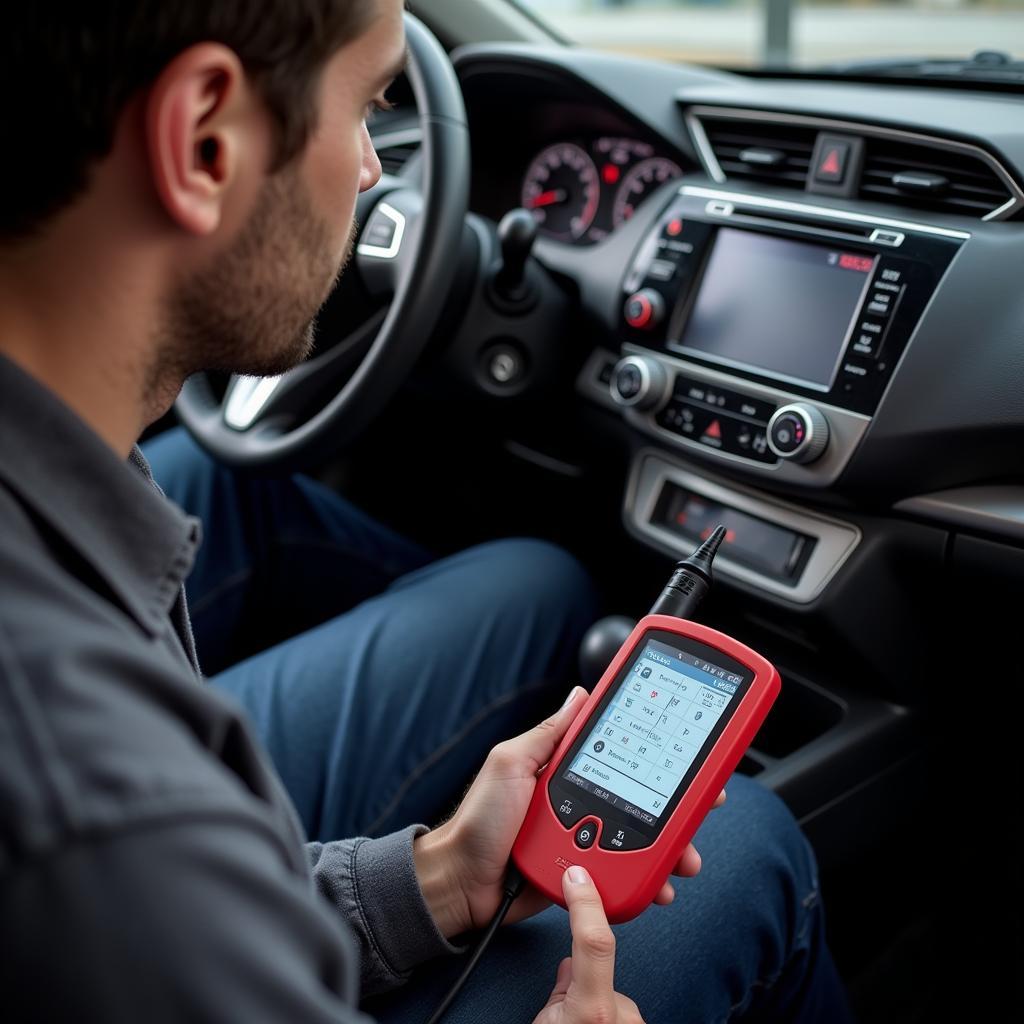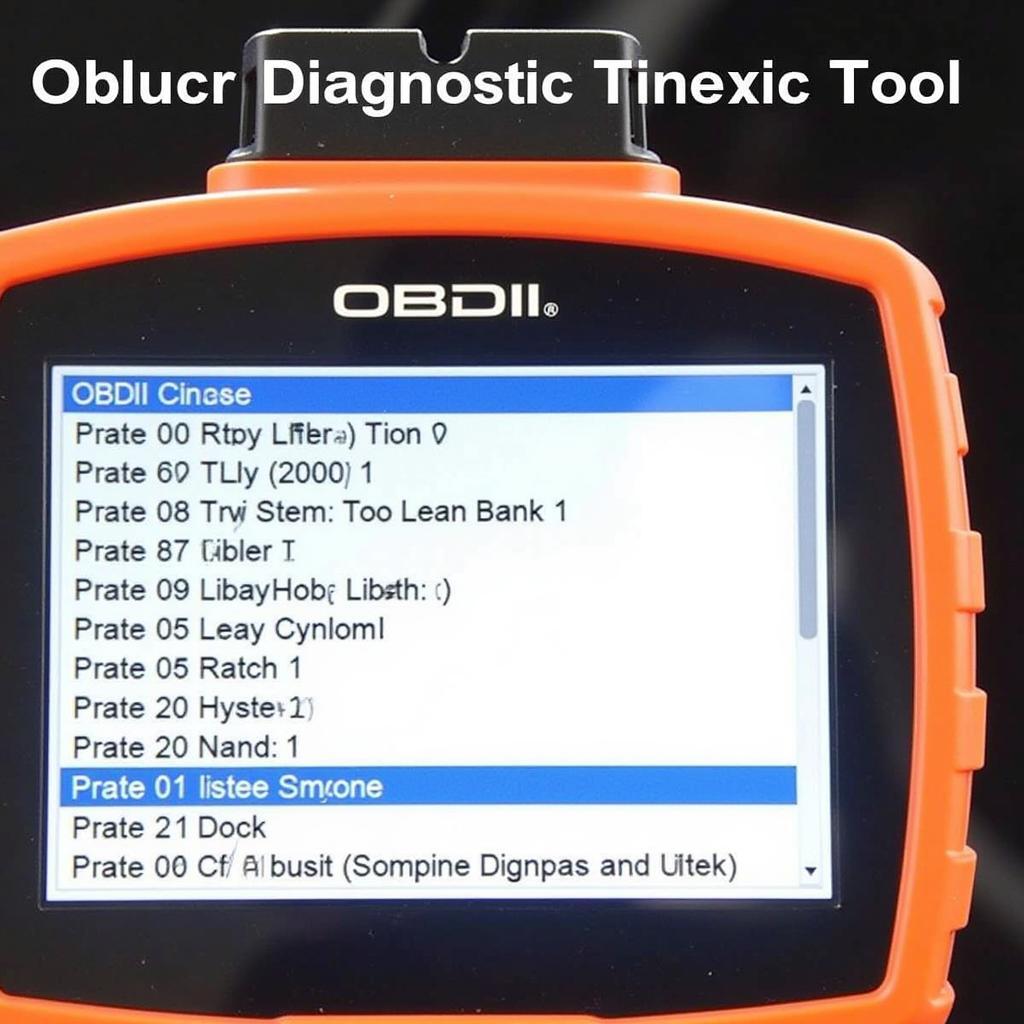In the ever-evolving automotive landscape, diagnostic tools have become indispensable for mechanics and car enthusiasts alike. These tools provide a window into the intricate workings of modern vehicles, allowing users to diagnose and troubleshoot issues with unprecedented accuracy and efficiency. This article delves into the core Functions Of Diagnostic Tools, equipping you with the knowledge to navigate the complexities of automotive repair.
Decoding the Language of Your Car: How Diagnostic Tools Work
At their core, diagnostic tools act as translators between your car’s computer system and your own understanding. They achieve this through the OBD-II port, a standardized interface present in all vehicles manufactured after 1996. By plugging into this port, diagnostic tools can tap into the wealth of data generated by your car’s various sensors and control units.
 Connecting an OBD-II Diagnostic Tool
Connecting an OBD-II Diagnostic Tool
Unraveling the Core Functions of Diagnostic Tools
Diagnostic tools offer a comprehensive suite of functions that empower users to address a wide range of automotive issues. Let’s explore some of the key capabilities:
1. Reading and Clearing Diagnostic Trouble Codes (DTCs)
When your car’s computer detects a malfunction, it logs a DTC, essentially a coded message indicating the nature of the problem. Diagnostic tools can read these codes, providing valuable insights into the root cause of engine issues, transmission hiccups, airbag malfunctions, and more. Furthermore, once the issue is resolved, these tools can clear the DTCs, resetting the system and ensuring smooth operation.
“Knowing how to interpret DTCs is like having a direct line to your car’s thought process,” says automotive engineer Emily Carter. “It eliminates guesswork and allows for targeted repairs.”
2. Live Data Monitoring: A Real-time Look Under the Hood
Imagine having a live feed of your car’s vital signs – engine RPM, coolant temperature, oxygen sensor readings, and more. Diagnostic tools make this a reality by displaying live data streams from various sensors in real time. This functionality is crucial for diagnosing intermittent issues, monitoring system performance, and verifying repair outcomes.
3. Component Activation and Testing: Taking Control
Diagnostic tools go beyond mere observation; they empower users to interact with and test specific vehicle components. This includes tasks like actuating solenoids, cycling fuel injectors, or commanding lights to turn on and off. This functionality is invaluable for pinpointing faulty components and confirming their operational status.
4. Programming and Configuration: Customizing Your Car’s Brain
Modern vehicles are heavily reliant on software and electronic control units (ECUs). Diagnostic tools often include programming and configuration functions, allowing users to update software, adjust vehicle settings, and even program new keys. However, it’s crucial to exercise caution when accessing these features, as improper modifications can lead to unintended consequences.
“Think of ECU programming as fine-tuning your car’s brain,” explains automotive electronics expert David Lee. “It’s a powerful tool, but it requires expertise and caution to avoid causing more harm than good.”
5. Bi-Directional Control: A Two-way Communication Channel
Advanced diagnostic tools offer bi-directional control, enabling users to not only receive data from the vehicle but also send commands back to specific modules. This is particularly useful for performing tasks like bleeding brake lines, resetting adaptive learning parameters, or regenerating diesel particulate filters.
 Using Bi-Directional Control for Brake Bleeding
Using Bi-Directional Control for Brake Bleeding
Choosing the Right Diagnostic Tool for Your Needs
The world of diagnostic tools is vast and varied, ranging from basic code readers to sophisticated professional-grade systems. Understanding your specific needs and budget is paramount when making a selection.
- DIY Enthusiasts: For casual users primarily interested in reading and clearing DTCs, a basic OBD-II code reader or a Bluetooth adapter paired with a smartphone app might suffice.
- Home Mechanics: Those who enjoy tackling more in-depth repairs would benefit from a mid-range diagnostic tool offering live data monitoring, component activation, and some programming capabilities.
- Professional Technicians: For professional automotive technicians, investing in a high-end diagnostic tool with comprehensive functionalities, including bi-directional control, advanced programming options, and extensive vehicle coverage, is essential.
Some popular options in the market include the ford vmm diagnostic tool, yanmar diagnostic tool, and the nmea2000 diagnostic tool. You can find more information about these tools and other options on specialized websites like ScanToolUS.
Conclusion: Empowering Automotive Diagnostics
Diagnostic tools have revolutionized the way we understand and interact with our vehicles. By providing access to a treasure trove of data and enabling advanced functionalities, these tools empower car owners, mechanics, and automotive enthusiasts to diagnose and resolve issues with greater precision and efficiency. Whether you’re a DIY enthusiast or a seasoned professional, understanding the functions of diagnostic tools is essential for navigating the complexities of modern automotive repair and keeping your vehicle running smoothly.
For all your diagnostic tool needs and expert guidance, contact ScanToolUS at +1 (641) 206-8880 or visit our office at 1615 S Laramie Ave, Cicero, IL 60804, USA.
FAQs
-
Are diagnostic tools universal?
While all vehicles since 1996 have a standardized OBD-II port, the specific protocols and data accessible can vary between manufacturers and models.
-
Can I damage my car using a diagnostic tool?
While generally safe, improper use of advanced functions like programming or bi-directional control can potentially cause damage. Always refer to your vehicle’s service manual and exercise caution.
-
Do I need a different diagnostic tool for different car brands?
Some diagnostic tools are designed to work with specific car brands, while others offer broader compatibility. Consider your needs and the vehicles you typically work on.
-
Can a diagnostic tool tell me when my car needs an oil change?
While some tools can read service reminders stored in the vehicle’s computer, they don’t typically monitor oil quality or predict oil change intervals.
-
What is a real time vehicla diagnostic tool?
A real-time vehicle diagnostic tool allows mechanics or car owners to view live data from the vehicle’s sensors, providing instantaneous insights into the performance and health of various systems.
-
Can a router diagnostic tool be used for car diagnostics?
No, a router diagnostic tool is designed for troubleshooting network connectivity issues and is not compatible with automotive systems.


